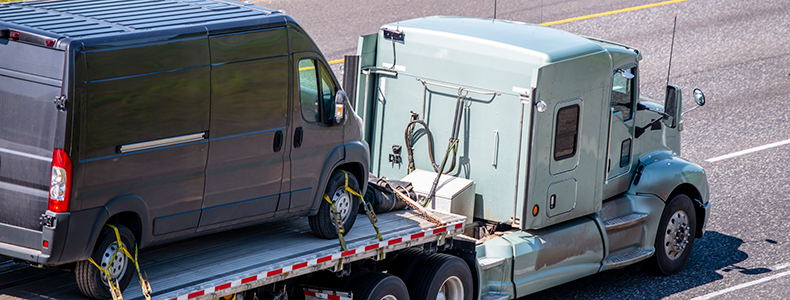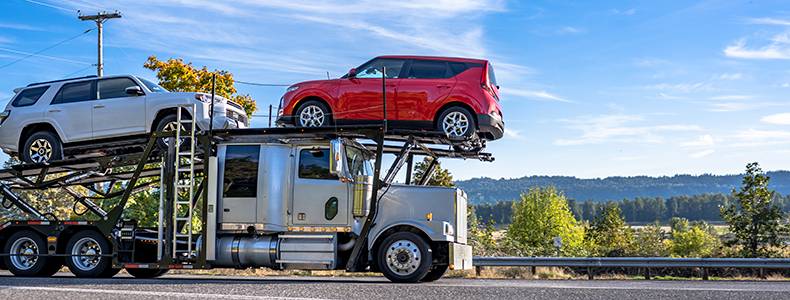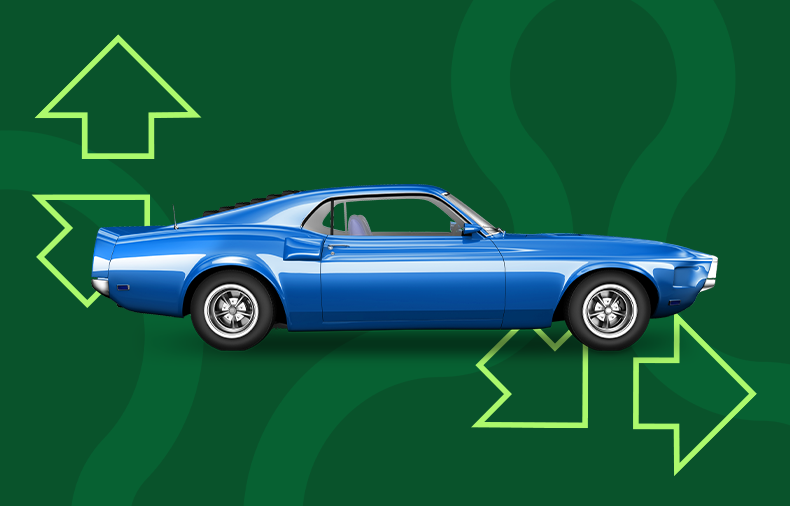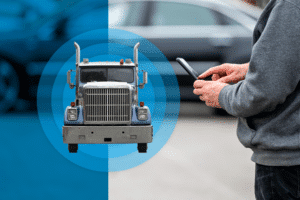The U.S. auto industry is booming, with new car sales projected to hit 16.3 million in 2025. Our reliance on vehicles is growing, and with it comes the need for more innovative ways to move them. Whether you’re relocating, purchasing a car from afar, or prepping a classic for a show, auto transport makes it easier than ever. But when you’re a first-time shipper, the process can feel overwhelming.
Are you asking yourself: “How does auto transport work?” “Who handles my vehicle?” “What am I getting into?” You’re not alone. This guide is here to walk you through everything—from types of transport to costs, from insurance to insider tips—so you can confidently ship your vehicle, possibly saving money and avoiding pitfalls along the way.
What Is Auto Transport?
Auto transport is a service that helps you move your car from one place to another, whether within your state or across the country. It’s used by:
- Families and individuals moving homes
- Car dealerships delivering vehicles
- People buying cars online
- Owners shipping specialty vehicles like antiques or exotics
Simply put, it involves professionals picking up your vehicle, transporting it in a secure trailer, and delivering it safely to your destination.
Service Formats
- Terminal-to-terminal: You drop off and pick up at shipping terminals
- Door-to-door: Your car is picked up and delivered to your specified addresses
Types of Auto Transport
Open Transport
- How it works: Cars are loaded onto open-air trailers
- Pros: Fast, cost-effective, and widely available
- Cons: Exposure to weather and road debris
- Best for: Daily drivers, family vehicles, non-luxury cars
Enclosed Transport
- How it works: Cars travel inside a fully enclosed trailer
- Pros: Protection from the elements, ideal for valuable vehicles
- Cons: Higher cost, limited space
- Best for: Luxury, vintage, collectible cars
How Auto Transport Works
- Request a quote
Provide vehicle details, pickup/drop-off locations, and transport type. - Compare providers
Use platforms like uShip to compare quotes, ratings, and timelines. - Book your carrier
Lock in your choice and schedule pickup. - Vehicle inspection
Carrier documents your car’s condition (scratch/dent photos). - Prep the car
Remove personal items, leave 1/4 tank of gas, disable alarms, and toll tags. - Transport begins
Your vehicle is loaded and begins its journey. - Stay updated
You can often track transit status online or via text. - Delivery & inspection
Inspect your car on arrival, compare its condition, and sign off.
✅ With uShip, you can simplify this entire process. Find and compare quotes, chat with providers, book confidently, and review carriers’ ratings—all in one user-friendly platform. Get your free quote today.
Benefits of Auto Transport
- Convenience: No long drives, hotel stays, or cross-country fatigue
- Time savings: Free up days for work, family, or moving day preparations
- Cost efficiency: It’s often more economical than a DIY road trip
- Vehicle protection: Professional handling reduces wear and tear
- Insurance coverage: Most carriers offer basic coverage; upgrades are available
- Flexibility: Choose the service that suits your vehicle and budget
Who Uses Auto Transport?
- Relocating households: Avoid exhausting drives and logistical hassles
- Remote buyers: Get your online car delivered without worry
- Snowbirds: Seasonal travelers shipping vehicles as they chase warmer weather
- Military personnel: Frequent relocations require reliable shipping options
- Dealerships and businesses: Move inventory efficiently and professionally
How Much Does Auto Transport Cost?
Costs vary widely, but here’s a helpful breakdown:
| Distance | Vehicle Type | Transport Type | Estimated Cost |
|---|---|---|---|
| Under 500 miles | Standard sedan | Open | $500 |
| 2,800 miles (LA → NY) | Sedan | Open | $1,200 – $1,500 |
| Same route (LA → NY) | SUV or truck | Open | $1,300 – $1,800 |
| Coast-to-coast | Sedan | Enclosed | $1,800 – $2,500+ |
| Distance + specialty car | Classic/exotic | Enclosed | $2,200 – $3,000+ |
What Drives the Cost?
- Distance – More miles = higher cost, but fewer dollars per mile
- Vehicle size – Larger or heavier cars cost more
- Transport type – Enclosed is premium
- Condition – Inoperable vehicles need special gear
- Timing and season – Peak demand (summer, holidays) raises prices
- Pickup/drop-off details – Remote vs urban, door-to-door vs terminal
Pro Tip: Booking with flexible dates can reduce your price—uShip customers often save 10–30% this way.
Is Auto Transport Safe and Reliable?

Safety is a top concern, and professional auto transporters take it seriously.
Insurance Coverage
- Basic coverage: Often included; typically $50K–$1M
- Supplemental policies: Optional upgrades for high-value vehicles
- Declared value insurance: Customize coverage for your car’s worth
Always ask for a copy of the carrier’s insurance certificate and review your policy details.
Inspection Rules
- Preload: Document dents, scratches, and condition on the Bill of Lading
- Post-delivery: Compare and note any changes
- Disputes: You have a short window (usually days) to report damage
Choosing a Reliable Carrier
- Check reviews: Look for consistent positive feedback on platforms like uShip
- Verify credentials: Ensure FMCSA registration and valid USDOT licensing
- Ask questions: About insurance, transit experience, and delays
- Avoid red flags: Lowball quotes, large upfront payments, no licensing info
Transit Times
| Distance | Estimated Transit Time |
|---|---|
| Under 500 miles | 1 – 3 days |
| 500 – 1,500 miles | 3 – 7 days |
| Over 1,500 miles | 7 – 14 days |
Potential delays may come from:
- Weather (snowstorms, hurricanes)
- Traffic, road closures, holidays
- Adverse routing or overbooked carriers
Pre-Shipment To-Do List
- Research: Compare carriers using uShip’s transparent platform
- Document: Thoroughly photograph your vehicle before pickup
- Prep: Empty the car, top up to ¼ tank, deactivate alarms
- Plan: Book 3–6 weeks ahead, especially during high demand
- Double-check: Ensure insurance, credentials, and estimated arrival date
During Shipping
- 🗣️ Stay connected: You should get notifications and tracking info
- 📘 Know your contract: Bill of Lading is your record—you sign it at pickup
- 📢 Be reachable: Keep your phone handy at all times
Post-Delivery Checklist
- 🚗 Inspect carefully: Cross-check condition against pre-shipment notes
- 📝 Sign or decline: If all looks good, sign off. If not, note it on the BOL and ask for photos
- ☎️ Report issues quickly: Damage reports should be filed immediately with both the shipper and the insurer
Money-Saving & Safety Tips
- Multiple quotes: uShip makes it easy—compare, don’t guess
- Start early: Booking two to four weeks out saves you money
- Timing flexibility: Accepting date windows helps carriers optimize trips
- Stay alert: If a quote seems too good to be true, it probably is
Final Thoughts

What is auto transport? It’s more than just moving a car. It’s a reliable, professional way to protect your time, your vehicle, and your peace of mind. Whether you’re relocating, buying online, or just trying to avoid a 1,500-mile road trip, auto shipping puts the logistics in expert hands.
With uShip, you get more than just a transport quote—you get a smarter way to ship:
- Easily compare rates and carriers with verified reviews
- Choose from open or enclosed transport, terminal-to-terminal or door-to-door
- Book confidently with optional protection options and carrier transparency
- Pay securely through uShip—your funds are protected until you sign off on delivery
- Track your shipment and communicate with your carrier every step of the way
Shipping doesn’t have to be complicated. With uShip, it’s fast, flexible, and tailored to your needs. We make car shipping as easy as booking a flight, with fewer surprises and a lot less stress.
Key Takeaways
- Auto transport moves your vehicle efficiently with less wear and tear
- Your price depends on distance, vehicle type, carrier method, and timing
- Safety and insurance are essential—always confirm coverage in writing
- Use uShip to compare trusted carriers, book easily, and stay informed
- Whether shipping across town or across the country, uShip makes it seamless
People Also Ask (PAA)
What does auto transport mean?
It refers to hiring professionals to move your car using a transport trailer, often coordinated online through platforms like uShip.
How much does it cost to ship a car across the U.S.?
Expect to pay $500–$1,500 for most standard routes, with luxury or enclosed transport costing more. uShip lets you compare all your options in one place.
Is it cheaper to drive or ship a car?
For longer distances, shipping is often cheaper when you factor in gas, lodging, time off work, and wear on your car. uShip helps you calculate and compare.
How should I prepare my car for transport?
Remove personal items, take photos, leave a quarter tank of gas, and check your carrier’s requirements. uShip offers helpful prep checklists for every booking.
Is auto transport safe?
Yes, especially when using licensed, insured carriers on uShip. Every transport booked through uShip includes secure, in-platform payments, so your money is protected until the job



